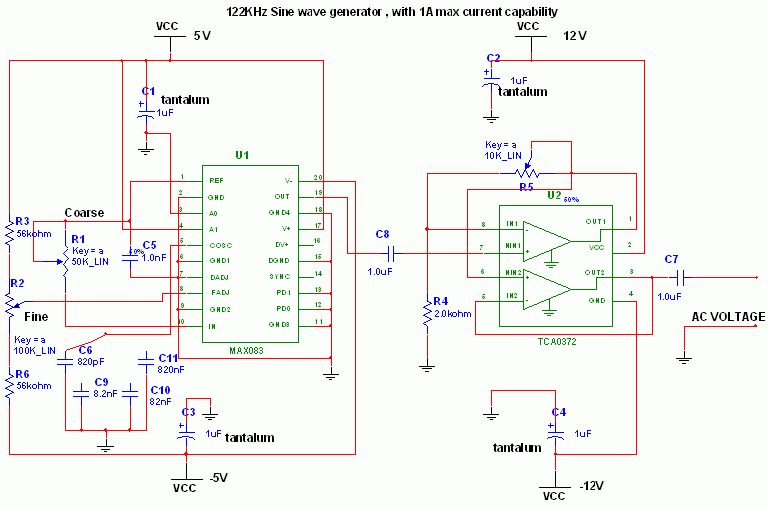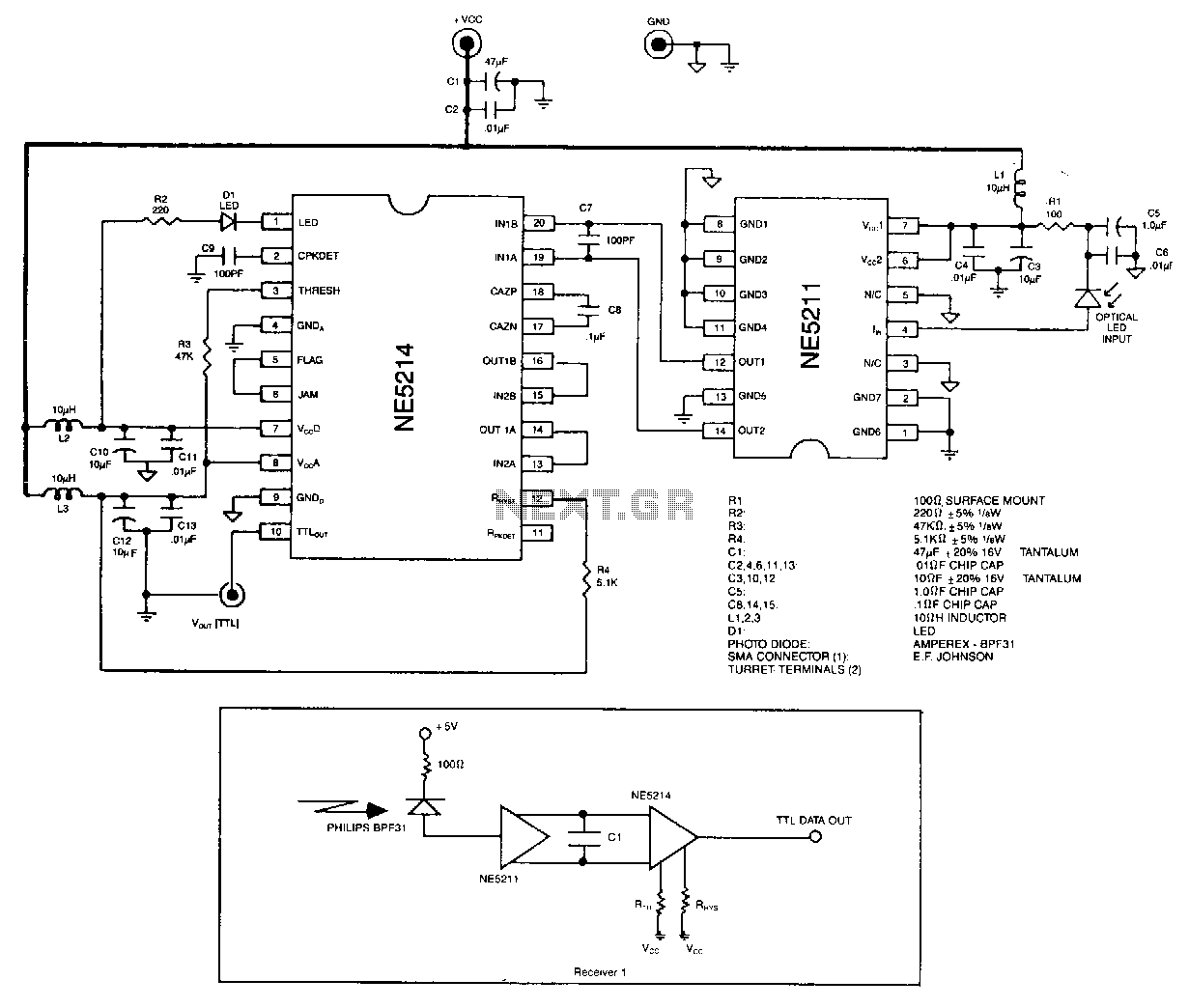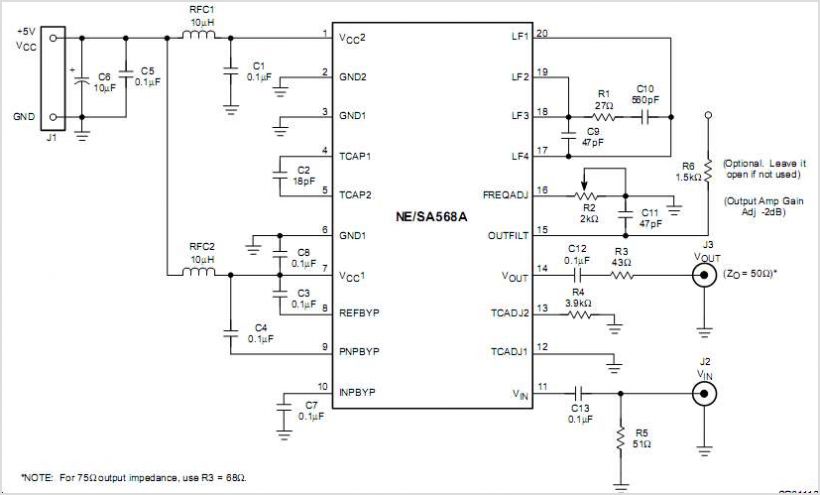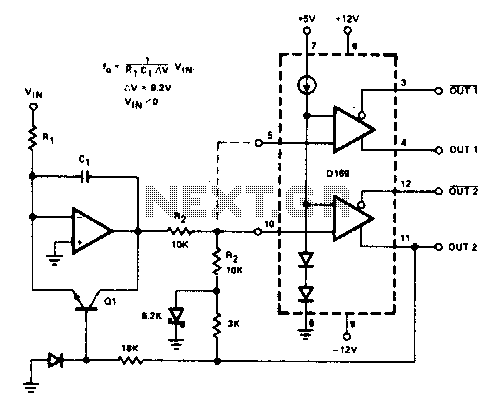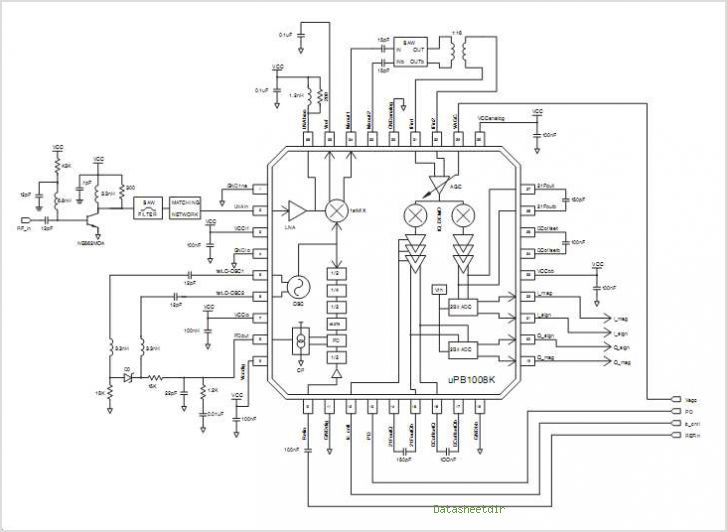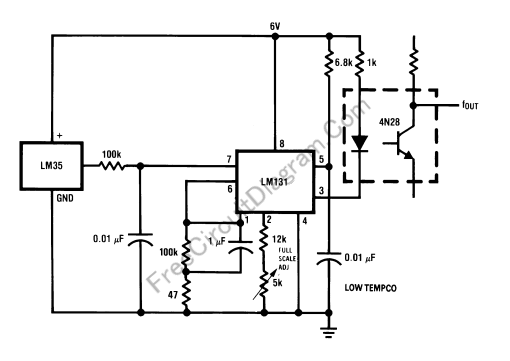
LOW NOISE 420 MHz ATV RECEIVER CONVERTER
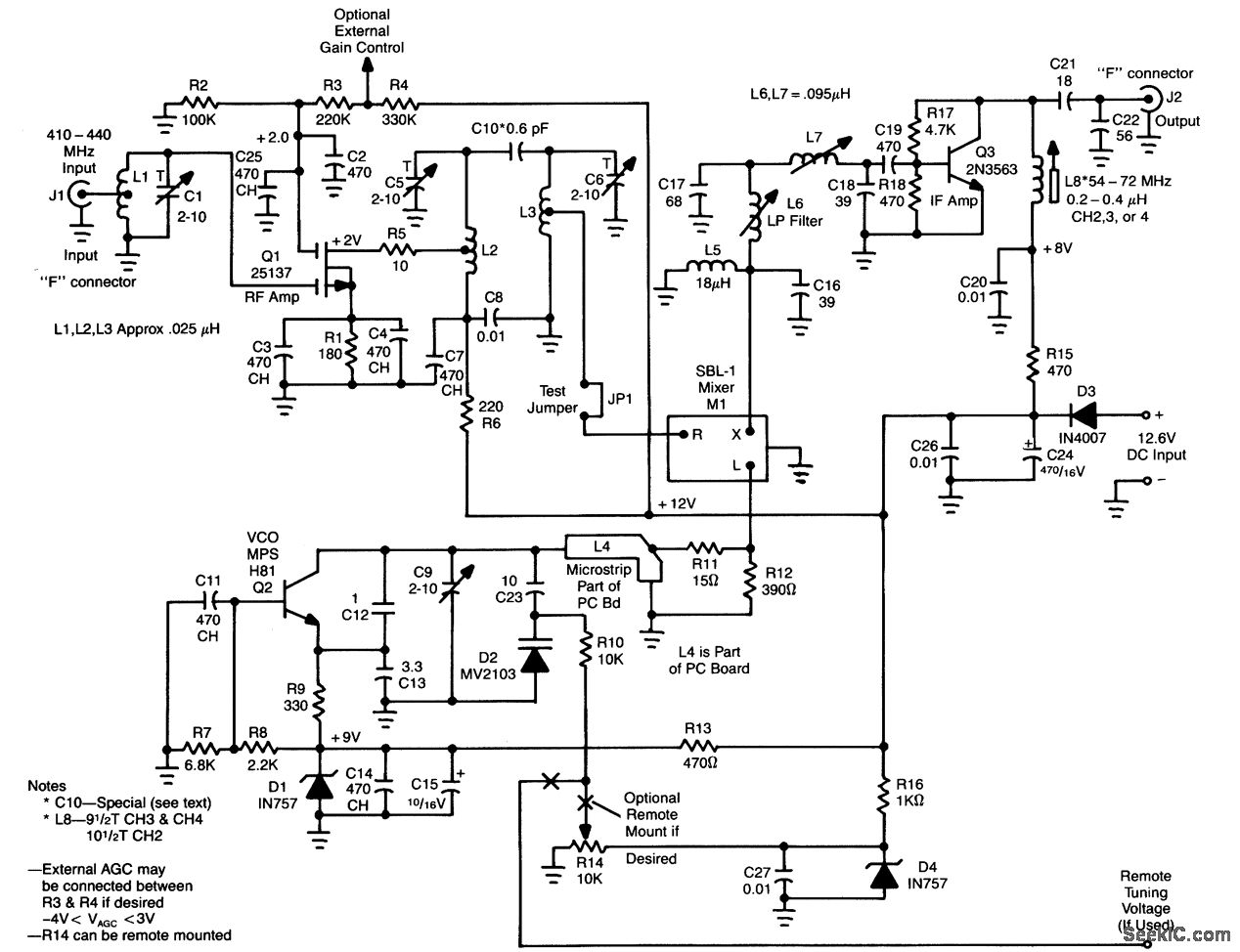
L1, Q1, L2, and L3 form an RF amplifier stage that drives M1, a doubly balanced mixer. Q4 serves as a local oscillator stage operating in the 375-MHz range. Signals in the 420 to 450-MHz range from Q1 are mixed in M1 and subsequently passed through the filter formed by L6, L7, and C17, allowing only the 60 to 70-MHz signals (CH3 to CH4) to pass. The intermediate frequency (IF) signal is then sent to Q3, which acts as an IF amplifier. The overall gain is 25 dB, with a noise figure of less than 2 dB. A complete kit of all necessary components, including the printed circuit board, is available from North Country Radio, P.O. Box 53, Wykagyl Station, New Rochelle, NY 10804.
The circuit described consists of several key components that work together to process radio frequency signals. L1, Q1, L2, and L3 are integral to the RF amplification stage, where L1 and L2 typically serve as inductors that enhance the gain of the RF signals. Q1, likely a transistor or FET, amplifies the incoming RF signals before they are routed to the mixer.
M1, the doubly balanced mixer, is a critical component for combining the RF signal from Q1 with the local oscillator signal generated by Q4. The operation of the mixer allows for the downconversion of high-frequency signals to a lower intermediate frequency, which is more manageable for further processing. The local oscillator stage, Q4, is tuned to 375 MHz, ensuring that it can effectively mix with the incoming RF signals in the specified 420 to 450 MHz range.
The filtering stage, which includes L6, L7, and C17, is designed to selectively allow only the desired intermediate frequency signals (60 to 70 MHz) to pass through while attenuating unwanted frequencies. This is crucial for maintaining the integrity of the signal and minimizing interference from other frequencies.
The IF amplifier, Q3, boosts the filtered intermediate frequency signal, ensuring that it has sufficient power for subsequent stages in the signal processing chain. The overall performance of this circuit is impressive, achieving a gain of 25 dB and maintaining a low noise figure of less than 2 dB, which is essential for high-quality RF applications.
For those interested in building this circuit, a kit containing all necessary components, including the printed circuit board, is readily available from North Country Radio, providing an accessible option for enthusiasts and professionals alike.L1, Q1, L2, and L3 compose an RF amp’’fter stage that feeds Ml, a doubly balanced mixer. Q4 is alocal oscillator stage In the 375-MHz range Signals h the 420 ‰to 450-MHz range from Q1 are mixed in M1 and fed through filter L6/L7/C17, where only the 60- to 70-MHz (CH3 CH4) signals pass. The IF signal is passed to Q3, an IF amplifier. The overall gatrns 25 dB and the noise figure less than 2 dB. A kit of all parts, including the PC board, is available from North Country Radio, P. O. Box 53, Wykagyl Station, New Rochelle, NY 10804. 🔗 External reference
The circuit described consists of several key components that work together to process radio frequency signals. L1, Q1, L2, and L3 are integral to the RF amplification stage, where L1 and L2 typically serve as inductors that enhance the gain of the RF signals. Q1, likely a transistor or FET, amplifies the incoming RF signals before they are routed to the mixer.
M1, the doubly balanced mixer, is a critical component for combining the RF signal from Q1 with the local oscillator signal generated by Q4. The operation of the mixer allows for the downconversion of high-frequency signals to a lower intermediate frequency, which is more manageable for further processing. The local oscillator stage, Q4, is tuned to 375 MHz, ensuring that it can effectively mix with the incoming RF signals in the specified 420 to 450 MHz range.
The filtering stage, which includes L6, L7, and C17, is designed to selectively allow only the desired intermediate frequency signals (60 to 70 MHz) to pass through while attenuating unwanted frequencies. This is crucial for maintaining the integrity of the signal and minimizing interference from other frequencies.
The IF amplifier, Q3, boosts the filtered intermediate frequency signal, ensuring that it has sufficient power for subsequent stages in the signal processing chain. The overall performance of this circuit is impressive, achieving a gain of 25 dB and maintaining a low noise figure of less than 2 dB, which is essential for high-quality RF applications.
For those interested in building this circuit, a kit containing all necessary components, including the printed circuit board, is readily available from North Country Radio, providing an accessible option for enthusiasts and professionals alike.L1, Q1, L2, and L3 compose an RF amp’’fter stage that feeds Ml, a doubly balanced mixer. Q4 is alocal oscillator stage In the 375-MHz range Signals h the 420 ‰to 450-MHz range from Q1 are mixed in M1 and fed through filter L6/L7/C17, where only the 60- to 70-MHz (CH3 CH4) signals pass. The IF signal is passed to Q3, an IF amplifier. The overall gatrns 25 dB and the noise figure less than 2 dB. A kit of all parts, including the PC board, is available from North Country Radio, P. O. Box 53, Wykagyl Station, New Rochelle, NY 10804. 🔗 External reference
